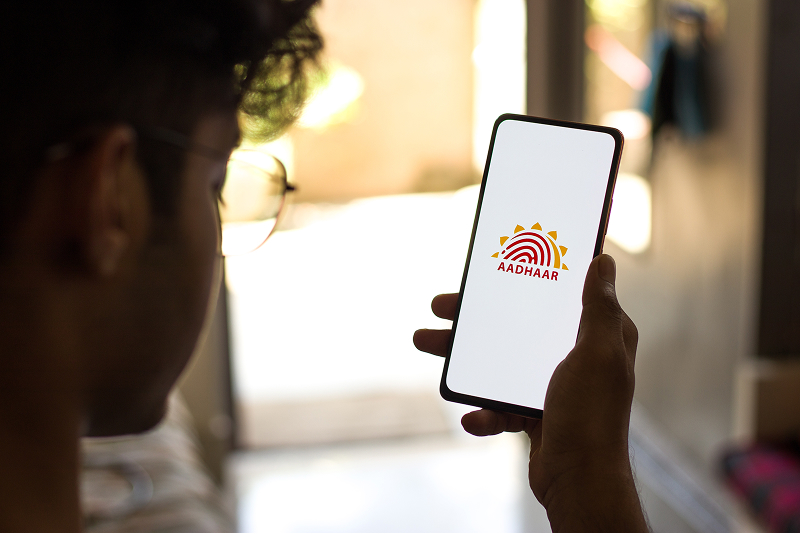New Digital Era for Aadhaar: Major Updates Rolled Out by UIDAI

The Unique Identification Authority of India (UIDAI) has unveiled a suite of major changes for the Aadhaar system in India — including a brand-new mobile app, easier online updates from 1 November 2025, and revised fee structures for demographic and biometric changes. These developments aim to simplify how citizens manage their digital identity and reduce dependence on physical visits to enrolment centres.
Background / Context
Since its launch in 2009, Aadhaar has grown to become one of the world’s largest biometric ID systems. The UIDAI has periodically introduced enhancements — for example, initiatives to update children’s biometrics and improve authentication reliability. However, the update process has often required in-person visits, physical submission of documents and manual verification — which users and the system have long sought to streamline.
Key Developments / Details
- New Aadhaar App
The UIDAI has launched a new “Aadhaar” smartphone app (for Android and iOS) aimed at storing, showing and sharing Aadhaar credentials digitally.
- Users can add up to five profiles (family members) tied to the same mobile number.
- Biometric lock and selective data sharing (e.g., showing only name and photo, not full details) are built-in.
- The new app does not replace the existing mAadhaar app; rather, it complements it.
- Online Updates from 1 November 2025
Starting 1 November 2025, Aadhaar holders will be able to update key demographic details — such as name, address, date of birth and mobile number — via online verification with linked government documents. Meanwhile, biometric updates (fingerprint, iris scan, etc.) will still require a physical centre visit.
- Revised Fee Structure
The UIDAI has introduced new fees for updates: for example, demographic updates will cost ₹75, biometric updates ₹125; children aged 5–15 for biometric updates are eligible for free services.
- Greater Authentication Activity & Innovation
The UIDAI reported high levels of authentication traffic — over 220 crore transactions in August 2025 — and is launching frameworks to enable innovation in digital identity solutions with academia and startups.
Technical Explanation
Think of Aadhaar like your digital passport for India. Previously, if you wanted to change your address or mobile number, you had to visit a physical centre, submit proofs, and wait — like going to a bank branch to update your account details. Now, with the new system:
- You open the Aadhaar app or web portal.
- Enter your Aadhaar number and verify via OTP sent to your registered mobile.
- For demographic changes, the system checks linked databases (like your passport or PAN card) to auto-verify — reducing manual uploads.
- Biometric changes still need an enrolment centre (because of physical fingerprint/iris capture).
- The app stores your Aadhaar card digitally, allows sharing via QR, and protects your privacy by letting you mask sensitive info.
By simplifying and digitising these steps, the process becomes more like updating your contact details in an online service rather than performing a formal offline procedure.
Implications
- For citizens: Less time and hassle — fewer visits to service centres; simpler updates from home.
- For service providers: Easier identity verification via app/QR code; digital credentials simplify KYC and onboarding.
- For the digital economy: With Aadhaar authentication hitting record volumes, a smoother update process strengthens trust and scalability in e-services, fintech, and welfare schemes.
- For children and future generations: Free biometric updates for younger age groups ensure the system keeps pace as kids grow, reducing mismatches later.
Challenges / Limitations
- Biometric updates still offline: While demographic updates go digital, biometric updates still require physical visits — limiting full “remote” update coverage.
- Digital divide concerns: Users without smartphones or reliable internet may face hurdles with purely app/online-based processes.
- Data security and privacy risks: As Aadhaar usage expands (digital sharing, multiple profiles), safeguarding against misuse remains critical. Past concerns around data exposure show the stakes are high.
- Adoption inertia: Some users may hesitate to move from physical cards to digital-only formats; service centres might still be crowded during the transition.
Future Outlook
Looking ahead, we can expect:
- Further enhancements to the app, potentially including biometric self-updates using advanced face recognition.
- Wider adoption of digital credentials (masked data sharing, secure QR verification) across banks, service providers, and government agencies.
- Continuous innovation in identity tech via UIDAI’s partnerships with academia and startups.
- Gradual policy shifts to phase out physical documentation and rely more on secure digital identity — aligning with broader “Digital India” ambitions.
Conclusion / Summary
The latest evolution of Aadhaar marks a significant shift: from being a largely paper-and-centre driven process to becoming a flexible, smartphone-friendly, digital identity platform. For users, it means fewer hassles and more control. For the broader ecosystem, it promises smoother identity verification, better service delivery and stronger digital infrastructure. As the system evolves, one thing is clear — Aadhaar isn’t just a card anymore; it’s the backbone of India’s digital identity future.